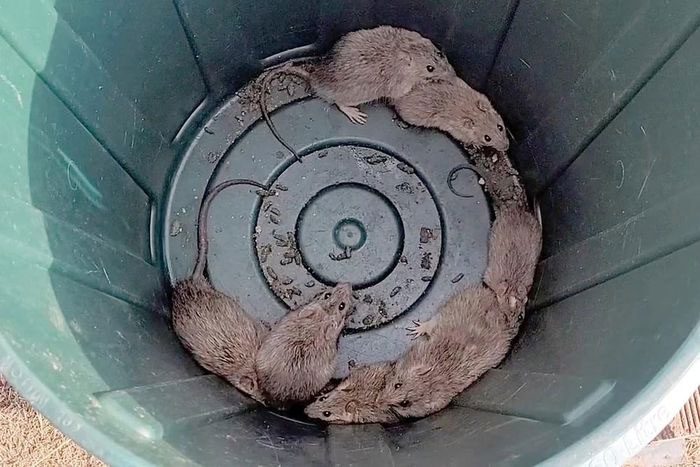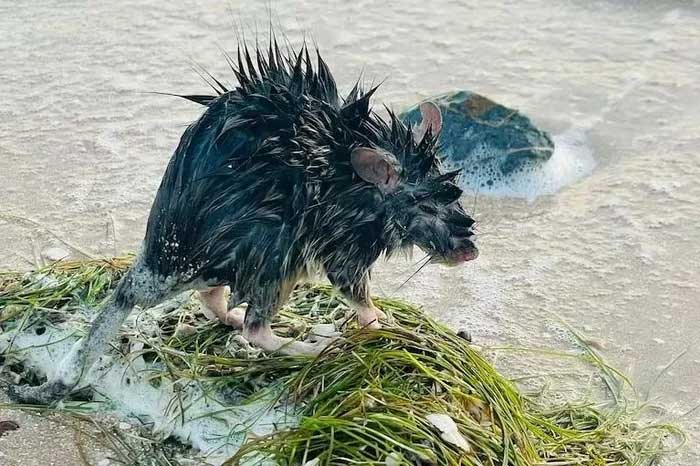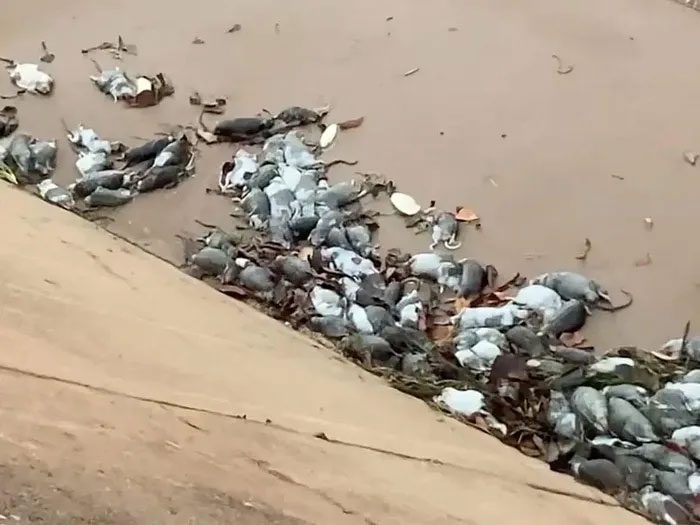Thousands of long-haired mice are moving north, attacking coastal communities in Queensland, Australia, contaminating water supplies and devastating everything in their path.
As a biological researcher at Queensland University of Technology in Brisbane, Emma Gray traveled to North West Queensland in June to study a mammal species but unexpectedly discovered an anomaly with another species.

Long-haired mice caught in a trash can in Normanton, Australia. (Photo: AFP).
During her field research, Gray captured over 1,000 long-haired mice. However, this number seemed insignificant when she observed tunnels (dug by the mice) everywhere on the grassland.
As a native species in Australia, the long-haired mouse typically exists in relatively low numbers, only exploding into large populations under favorable conditions. Currently, Australia is facing an explosion in the long-haired mouse population.
The swarm of mice has spread across Northern Australia, prompting government officials to issue warnings about a “mouse plague.” Recently, the rodents have attacked coastal towns, gnawing through electrical wires, devouring food supplies, attacking livestock, and even damaging vehicles.
A resident of the coastal town of Karumba shared, “The mice are destroying everything. They eat anything they can find.”

A long-haired mouse on the beach of Karumba in Queensland, Australia. (Photo: AFP).
Scientifically named Rattus villosissimus and known to Aboriginal Australians as majaru or mayaroo, the long-haired mouse typically inhabits arid and semi-arid environments. They often hide in cracks in the clay soil to escape the heat and predators like owls and feral cats.
Long-haired mice feed on wild plants, particularly the leaves and seeds of trees, as they do not live symbiotically or depend on humans for food and shelter, unlike the common brown rat familiar to urban residents worldwide.
Every three to five years, La Niña weather patterns bring increased rainfall to Australia. For long-haired mice, more rain means more lush vegetation and more food. With a plentiful food supply, these mice can give birth every three weeks, with each litter containing up to 12 offspring.
Gray believes this is a very natural phenomenon and, although lacking historical records, she suspects that the cycle of boom and subsequent decline of long-haired mice has been occurring for thousands, even tens of thousands, of years.
According to Gray, the population explosions of long-haired mice occur every 3 to 17 years. However, more mice also mean more problems, at least for humans, as they can be quite destructive.
Karumba is the latest town to suffer from this fierce invasion. According to ABC news, the mice have moved north, attacking communities, contaminating water supplies, and destroying crops.

Dead long-haired mice washed up on the beach. (Source: The Guardian).
Jemma Probert, a fishing boat owner, reported having to shove mice off her boat, while fisherman Brett Fallon told ABC that at least 100 mice invade his vessel every night.
Derek Lord, who runs a car rental business, told AFP that the mice had destroyed a car by chewing through the wiring in the engine compartment.
Some mice even swim out to the sandbanks at low tide and drown when the tide comes in. Fallon noted he had seen dead mice floating on the surface of the sea. The carcasses of thousands of mice subsequently washed up on the shore, causing a severe stench that disturbed local residents.
The mayor of Carpentaria Shire stated that he and other local officials are preparing to deal with wave after wave of these small four-legged invaders.
Fortunately, there is good news: the increase in the long-haired mouse population will soon come to an end. Although scientists are not entirely sure why, several factors are believed to contribute to the decline of the mouse population, including inbreeding issues, an increase in predators, and a decrease in food supply.


















































